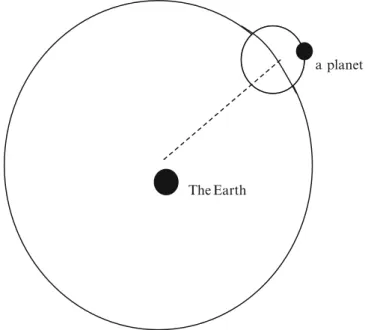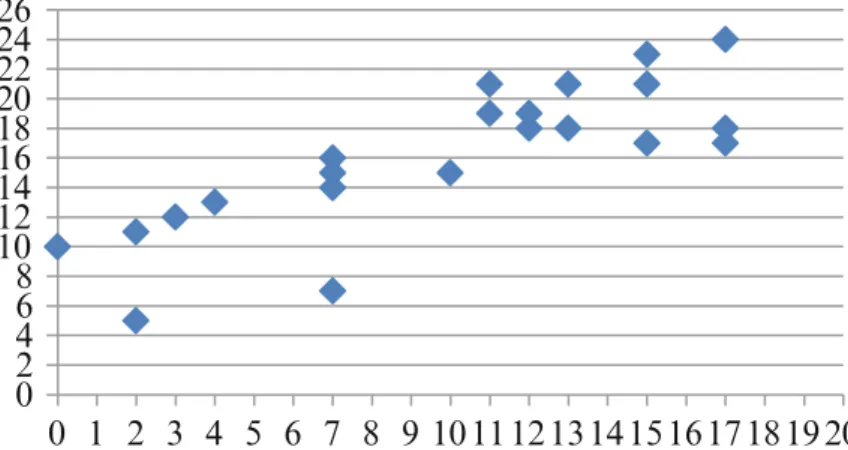However, this is still a controversial view, and one of the aims of the book is to make some arguments for it. Finally, I would like to thank Ties Nijssen for her great help and encouragement in the final editing of the book.
Greece: The Dawn of Science
However, there is a question about what role scientific insight plays in the beginning of the industrial transformation. The axiomatic ideal The fourth important contribution to the development of the scientific approach is Euclid's axiomatization of mathematics.
The Medieval Worldview
Greek views, however, were probably a necessary factor in the emergence of the scientific revolution almost 2,000 years later. The first institutions of higher education – the forerunners of the final medieval universities – were the faculties of medicine and law in Italy.
The Scientific Revolution
His magnum opus On the Works of the Human Body (1543) is generally considered the first modern text on anatomy. The New Organon, book 1, sec XCV) Why did the scientific revolution begin in Western Europe in the late 1500s.

Theory of Science and Philosophy of Science
Summary
The second is the view that knowledge could be gained by rational argument, not from sacred authority. This empiricist view regained importance in Western thought around 1500 and was the central aspect of the Scientific Revolution.
Introduction
Knowing That, Knowing How and Acquaintance
In German, French, Swedish, Italian (and probably other languages as well) the difference between knowledge of objects and knowledge of truths is explained by the use of different verbs. Philosophical discussion of the nature of knowledge is almost exclusively concerned with the knowledge of truths.
The Definition of Propositional Knowledge
P Is True
Some tend to argue that Ptolemy knew the planetary system, but we have different (or better) knowledge. One such consequence of the correspondence theory of truth is that a proposition may be false even though we may have very good reasons for believing it to be true (and vice versa).
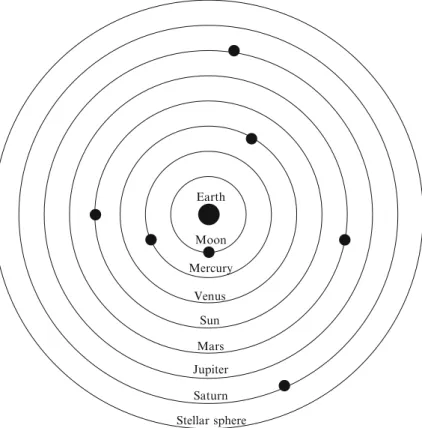
Good Reasons for P
This is the basis of the provisional nature of knowledge: since we do not know which of the claims we call knowledge are false, we must be willing to rethink everything, even though we have good reason to believe that most of what we claim to know is . it is true. I believe in the result of science. This criterion of knowledge—good reasons for believing that a proposition is true—is perhaps the least controversial of the general conditions.
What Does It Mean to Believe That P?
In today's world, it does not seem reasonable to say that computers could have these properties. On the other hand, if we believe that computers are in principle incapable of having beliefs, and if we want to preserve Plato's definition of knowledge, then we must hold that computers are likewise incapable of knowledge, regardless of their performance.
Can One Know Without Knowing that One Knows?
Reliabilism
This suggests that the three conditions are not sufficient and some adjustment is needed. This has inspired an increasing number of epistemologists to replace justification with a more descriptive condition, namely that the beliefs called 'knowledge' have come about through reliable procedure; hence the label 'reliability'.
Data, Information, Knowledge
The first thing to note is that the word 'information' is used in at least three different senses. The first sense of 'information' is that which is closest to what we mean.
The Philosopher ’ s Versus the Sociologist ’ s Concept
Students of history do not observe historical events, in the strict sense of the word. It is common knowledge that the cause of influenza, or the common cold, is a specific type of virus.

The Expression ‘ It Is True for Me that
Knowledge of Religious Beliefs
According to the Christian religion, Jesus is the son of God" and "I do not believe that Jesus is the son of God". Then I don't know that Jesus is the son of God, but I just know what some other people believe.
Summary
Police also find a large number of Pelle Persson's fingerprints at the crime scene. If one believes that a proposition is true, then one knows that it is true. j) 500 years ago everyone knew that the earth was the center of the universe, but now we know that the earth is not the center of the universe. k).
Introduction
It is especially important for the medical field to be able to clearly distinguish between medical science and quackery. Therefore, it can be very important to be able to distinguish between scientific methods and non-scientific methods, because only with scientific methods is there a reasonable possibility that the conclusions one draws are true and can be generalized.
Unity of Science?
The central activity of the cultural sciences is interpretation: interpretation of texts, events, actions, assertions, institutions, artefacts, etc. In contrast to this, in the natural sciences it is possible to be strictly objective in the description of the phenomena one studies in that two researchers can agree on an observation, regardless of the cultural or theoretical background they may have.
Hypothetical-Deductive Method
As in the previous example, we can call this assumption, which has not been tested in this experiment, an auxiliary assumption: . A statement that (i) is necessary to derive an empirical implication from a hypothesis, and that (ii) is not tested in the given situation, but rather is assumed to be true.
Hypothesis Testing in the Social Sciences
Empirical consequence¼def. A statement that (i) is based on a hypothesis and any supporting assumptions and (ii) the truth of which can, under probable circumstances, be determined by observation. If Durkheim's hypothesis is correct, the suicide rate should be lower in Catholic provinces than in Protestant provinces.
Hypothesis Testing in History: The Wallenberg Affair
On August 18, 1947, the Russians sent a note (after inquiries from the Swedish government) stating that Wallenberg was not in the Soviet Union. A few years later, the Swedish government again inquired about Wallenberg's whereabouts, as rumors circulated that Wallenberg was alive and in the Soviet Union.
Statistical Testing of Hypotheses
Bayesianism
In order to calculate the probability of the hypothesis H, given the result O, we need to determine the values of P(H), P(O|H) and P(O|H0). Conversely, if we interpret probability not as a measure of the degree of subjective certainty, but as an objective property, then it is difficult to justify the claim that the original probability of a hypothesis being true or false is 50/50.
Statistical Inference -Neyman-Pearson ’ s Method
A statistical test shows that if the null hypothesis were true, then the probability of the above outcome would be less than 1. The probability of the outcome, conditional on the null hypothesis, can be higher than 5% regardless of zero value. - the hypothesis is false, and it is possible for the significance value to be less than 5% (or some other chosen limit) even though the null hypothesis is true.
Unacceptable Auxiliary Assumptions: Ad Hoc-Hypotheses
He also placed the Earth a little away from the center of the main circular path. When you combine these two circular motions – the epicycle and the main circular path – with appropriately chosen radii, you get the apparent motion of the planet.
Summary
It looked like a 2000 million year old piece of Africa had landed on the South American continent. The results of this experiment on the number of deaths from puerperal fever were as follows:.
Measurement and Scales
By comparison, we can hardly say that 20C is twice as hot as 10C, as becomes clear when one expresses the same temperature in the Fahrenheit scale: 10 C¼50 F and 20C¼68F; therefore this ratio of 2:1 in Celsius is a ratio of 6.8:5 in Fahrenheit. There is perhaps reason to claim that the nominal scale is not actually a scale in the full sense of the word, but simply a classification scheme.
Statistical Relations
A minus sign indicates that an increase in the value of one variable tends to decrease the value of another variable. A questionnaire containing the following question: How will you vote in the upcoming referendum.
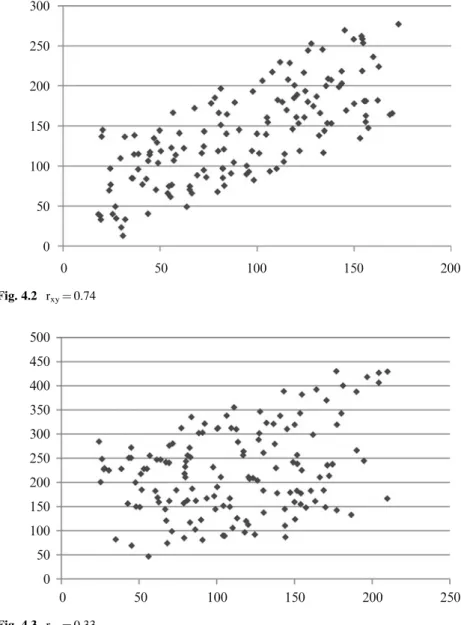
Data, Observation, Observational Statement
In fact, it turned out that the scientist had simply painted black spots on the backs of the mice. The blatant fraud committed by the scientist in the story of the mice with black spots raises the question of how common such fraud really is.
On the Theory-Dependence of Observational Statements
The point is that one can formulate observational statements without certain recognition of the object. Before Copernicus, it was generally believed that the Earth lay motionless at the center of the universe.
Observations and History: On Source Criticism
Furthermore, it is this dependence that makes us doubt the truth of the author's statements. An informational text may be completely unreliable in terms of the events described in it, but it may still be useful as an expression of the author's attitudes, values, and beliefs.
Summary
If we ask what the text says about Thucydides' view of Athenian life, instead of questioning the accuracy of what Pericles said, or if Pericles even said it, we treat the text not as an informative source but as an ancient relic that tells us something about , how the Athenians saw themselves. Galanter (Eds.), Handbook of Mathematical Psychology (Vol. 1, pp. 2006). In search of history: Goals, methods, and new directions in the study of modern history (4th ed.).
Introduction
We can thus draw the conclusion that qualitative methods can be characterized by the fact that the data collected is classified; that is, qualitative observations form a nominal scale. In a sense, it is obvious that the determination of a person's blood type is a measurement that results in a qualitative statement.
Intentionality and Meaning
To say of something that it is so and so is to decide under which concepts the particular phenomenon falls. It is this collective aspect that ensures the objectivity and observer independence of these kinds of social institutions.
Hermeneutics
In the process of interpretation, therefore, one begins with an initial conception of the whole and then uses this to provide a more detailed study of the parts. This circularity ceases when the interpretation process reaches a sufficient degree of coherence between the interpretation of the parts and the whole.
Grounded Theory
First, it is not written on parchment, but on paper, which was highly unusual for important documents of the time. Bacon's inductivism has been criticized for theoretical naivety; the sorting of objects and phenomena into categories is at least partly an active process of the mind.
The Intentionality of Observations
This attention to detail may seem trivial, but it is not the physical aspects of the text that should be focused on. Classifications of plagues and volcanic eruptions as expressions of the will of the gods seem to us remarkable and thus inaccurate.
Are Quantitative Methods Better than Qualitative?
The answer is that the best theory is one that helps us predict the occurrence of the phenomena in question and thus enables us to take preventive action. As I understand the situation, no general position can be taken on this question; rather, in each concrete situation, one must ask what kind of question - quantitatively or qualitatively - we are trying to answer.
Objectivity and the Use of Qualitative Methods
To claim the existence of a particular abstract entity (eg, the meaning of a sentence), one must be able to distinguish between the entity and its description or name. It follows that one must be able to determine whether two different descriptions describe the same unit or different units.
Searle on Brute and Social Facts
It is not uncommon for people to be unsure whether an alleged social fact is valid or not. There are interesting borderline cases where it is unclear which social fact is the case.
Social Constructions
If the concept of social construction is to have any intelligible meaning, then there must be things that are not social constructions. In summary, I should say that - under certain interpretations - the concept of social construction seems to coincide with Searle's concept of social facts.
Criteria for Correct Interpretations
One can then argue that this interpretation is wrong, as it breaks with the historical continuity of the interpretation of such contracts and other legal documents. When the play is to be performed at the theater, the director must interpret the text to determine the point of the play.
Summary
Introduction
Logical Positivism
The theoretical sentences in which the Vienna Circle was interested were generally legal sentences of the form 'all objects of type A have property B'. Before we do that, it is reasonable to require that one examine other places at different times of the year.
Falsificationism
If the hypothesis is strengthened, then the next test is more likely than it was before the test to be consistent with the hypothesis. The probability of a hypothesis is the quotient of a number of positive cases over the number of possible cases.
Normal Science, Scientific Revolutions
Fortunately, one can question the strength of the premises on which the incommensurability thesis is built. Many of the paradigm shifts that Kuhn discusses in his book are not such that scientific norms have changed to any significant extent.
Lakatos ’ Theory of Research Programmes
Lakato's basic methodological rule is as follows: abandon a degenerative research program in favor of a progressive research program. It cannot reasonably be said that you should abandon a research program at the first sign of difficulty.
Methodological Anarchism: Anything Goes
The reason is that to claim progress has been made, it is not enough to say that a new theory differs from an older one; that the newer theory represents progress assumes that one has compared the two theories with respect to some criteria that the new theory better meets. I would even go so far as to argue that it is contradictory to simultaneously state that there is progress when one theory is left to another and that those theories (paradigms or research programs) are incomparable.
Summary of the Debate
It is also clear that no rule proposed so far has been both widely accepted and put into practice; and yet progress has been made and is still being made. For example, in the case of a conflict between theory and experiment, other researchers repeat the experiment under different circumstances to try to determine whether the observations are wrong, or whether the observations are correct and it is the hypothesis that requires revision.
The Rationality of Science: A Model
In other words, there is reason to believe that it is possible to define a scientific concept of rationality, even if it is impossible to provide a sharp demarcation between science and pseudoscience. How do you know it's friction that keeps a ball from rolling and not demons.
Causes Are INUS Conditions
There are many medical examples that illustrate this point, such as the cause of the common cold. In this case, we would probably say that the cause of the flu is a weakened immune system.
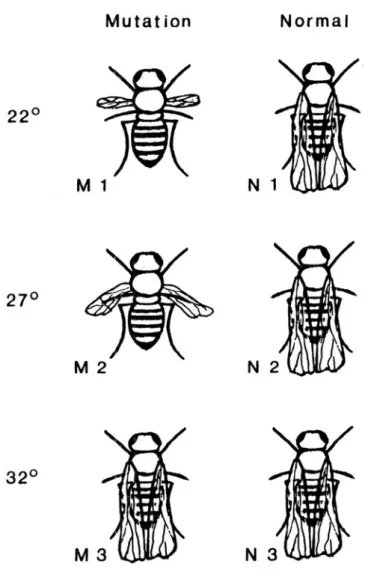
Cause-Effect and Order in Time
Causes and Statistical Correlations
The pragmatic, subjective or biased part of the answer is the suggestion of one of these conditions as the cause, as opposed to the other conditions in the complex, i.e. If this happens, we say that the probability of the combined event, A and B, is factorable.
Risk Factors and Conditional Probabilities
My previous conclusion, that a correlation should not automatically be interpreted as a causal relationship, also applies to risk factors. A risk factor need not be a cause. However, it is worth pointing out that one does not often use the term 'risk factor' for factors that we believe are not causal, even if they correlate with the disease.
Direct and Indirect Causes
Causes as Physical Effects
Cause and Effect in History
So those who argue that counterfactual analyzes of causation need a consistent account of the semantics of counterfactuals. In fact, much of the discussion has been about supposed counterexamples built on our intuitions about causality.
Summary
If the amount of F in the blood exceeds the limit, the risk of getting G increases. If you have G, then the amount of F in the blood must have exceeded the limit. e).
Explanation and Prediction
Given that people have been able to calculate the moon's movement quite precisely since Babylonian times, it has long been possible to predict the tides with reasonable accuracy. An example of the second case, that you can give a good scientific explanation for some phenomenon without the possibility of making a prediction, can be found within biology.
What Is Explained?
According to a well-known position formulated by, among others, Dilthey and Weber, there is a significant difference between explanation in the natural sciences and explanation in the humanities/social sciences (GermanKulturwissenschaften). The discussion continues in the next chapter with various explanatory aspects that are particularly relevant to the humanities and social sciences.
The D-N Model
Problems with the D-N Model
This example also satisfies the requirements of the D-N model (for the sake of argument, let's assume for a moment that the law "When the barometer falls, storms will come" is at least approximately true), but one can do not accept as well as a correct scientific explanation why stormy weather occurs. Moreover, not all sentences of the form "if A, then B" for which there is empirical support are accepted as laws.
Causal Explanations
This problem arises because of the assumption of proponents of the D-N model that we mainly want to explain single events. The idea is that a phenomenon can be explained if it can be shown to be logically related to other previously unrelated phenomena.
Explanation as Unification
As we will see in Chapter 10, scientific laws have the logical form 'For all x, if Ax, then Bx'. However, a deeper discussion of these theories' strengths and weaknesses is beyond the scope of this book.
Statistical Explanations
Finally, if we point out that she is a member of the social democratic party, then the probability changes radically in the opposite direction. Suppose we describe an event in a certain way and give the probability that it will occur.
Action Explanations
To complete the explanation, we need to know that the action was performed only for these reasons and not others. Also note that the explanans contains an element of direction to the future, to the agent's desired state.
Pragmatic Explanations
The question is, however, whether these critics have correctly understood Van Fraassen's intention with his pragmatic explanatory model. Undoubtedly, Van Fraassen's pragmatic theory is quite successful in terms of explanations in ordinary contexts.
Summary
For more than 40 years, Pripps (a Swedish brewing company) had been licensed to produce Coca Cola in Sweden. This is because Pripps, which dominated the soda market at the time, was competing with Coca Cola for some similar products.
Methodological Collectivism Versus Methodological
It is not unreasonable to say that the choice between methodological collectivism/individualism is really only a choice of the starting point for an explanation. A curious person may accept the overall explanation and still ask for explanations for some of the circumstances stated in the explanans.
Explanations of Historical Events
In this case, the investors believed that they were losing money in Asia and that the best way to avoid this loss was to get out of the Asian market as quickly as possible. The second, an explanation of the effect of this change in capital flows, is a causal explanation.
Explanation of Social Phenomena
If one sees people as primarily autonomous individuals, it is natural to adopt methodological individualism. If, on the other hand, one views humans as primarily social creatures who have few or no properties (other than biological ones) independent of their society, then it is natural to adopt methodological collectivism.
Functional Explanations
This results in an increase in the number of individuals with the same beneficial trait in the next generation. The feedback mechanism is entirely causal and the only non-causal element in the explanation is the occurrence of spontaneous mutations.
Summary
Despite its apparent absurdity, such a principle would actually operate in any organization where the promotion mechanism rewards the best members and where the mechanism at their new level in the hierarchical structure does not depend on the competence they had at the previous level , usually because the tasks of the levels are very different from each other. Ricoeur (Ed.), Hermeneutics and the human sciences: Essays on language, action and interpretation (trans. and introduction: Thompson, J. B.).
Introduction
Moreover, much of the philosophical discussion of laws seems to be unrelated to the practice and content of science; scientists listening to typical philosophical discussions of laws would remove the impression of scholasticism—and they would be right. I especially agree with Earman's last comments that the discussion is divorced from scientific practice and that it has an air of scholasticism.
Empirical Generalizations: Fundamental Laws
But the correct definition of this situation seems to me to be 'mess' rather than 'disagreement'. Many might be willing to accept the claim that all adult swans are white as an empirical generalization.
Deterministic and Statistical Laws
Conversely, in order to have blue eyes, a child must inherit genes for blue eyes from both parents. For all x, if x is a human, the probability that x has blue eyes, conditional on x having one blue-eyed and one brown-eyed parent, and one of the parents of the brown-eyed parents being blue-eyed, is 50%, i.e. ,.
The Extension of the Concept of a Natural Law
It is widely believed among today's atomic and nuclear physicists that there is real randomness in nature and that the statistical character of radioactive decay does not depend on our failure to describe all the relevant factors. A few years ago, however, the order was reversed; by means of the quantized Hall effect it was possible to give a very accurate and operational determination of the resistance.
Laws and Accidental Generalisations
Thus he fulfills criteria (1) and (2); however, it is clear that this statement is not a scientific law, even if it is true. Thus, a law has three significant features: a law is general, it has the form 'if x, then y', and it is necessarily true.
It follows that these conservation laws are really just consequences of certain conditions for our descriptions of nature. Thus, we cannot claim that with this analysis of conservation laws we have solved the problem of the nature of scientific law.
A Proposal: Some Laws Are Implicit Definitions
Equation (10.7) serves as an implicit definition of mass (An explicit definition of mass in terms of other quantities is impossible, as it is one of the fundamental quantities in physics.). Neither the concept of mass nor the modern concept of force was used or known before Galileo and Newton; The introduction of these concepts and the establishment of the law of conservation of momentum and Newton's laws cannot be separated either historically or conceptually.
Summary
Introduction
However, one cannot tell how far the distance is, how windy the course is, or how long it will take to travel; the metric properties of the commuter train network are not displayed, only the topology. Two interesting questions immediately arise: (1) is it in principle possible to construct a model that gives a complete picture of part of reality, and (2) whether we had such a model and if we knew that it was complete, should we then call it a model of reality.
Structural Similarity as a Mapping of Relations
Mathematical Models
Wave-Particle Dualism
Can One Measure Structural Similarity?
Ontology and Structural Similarity
Some Auxiliaries
Introduction
Substance Dualism
Property Dualism
Monism
Monistic Theories
Three Important Problems for Reductionists
Mental Causes
Speculations
The Science of Man
Values and Their Role in Science
Value-Free and Value-Laden
Is Science Valuable?
Feminist Critique: Hidden Values in Science
Research Ethics
The Impact of University Mass Education
Publish or Perish: The Value of a Research Paper
Research Funding and Planning
Big Science
The Scientific Attitude and the Search for Meaning
